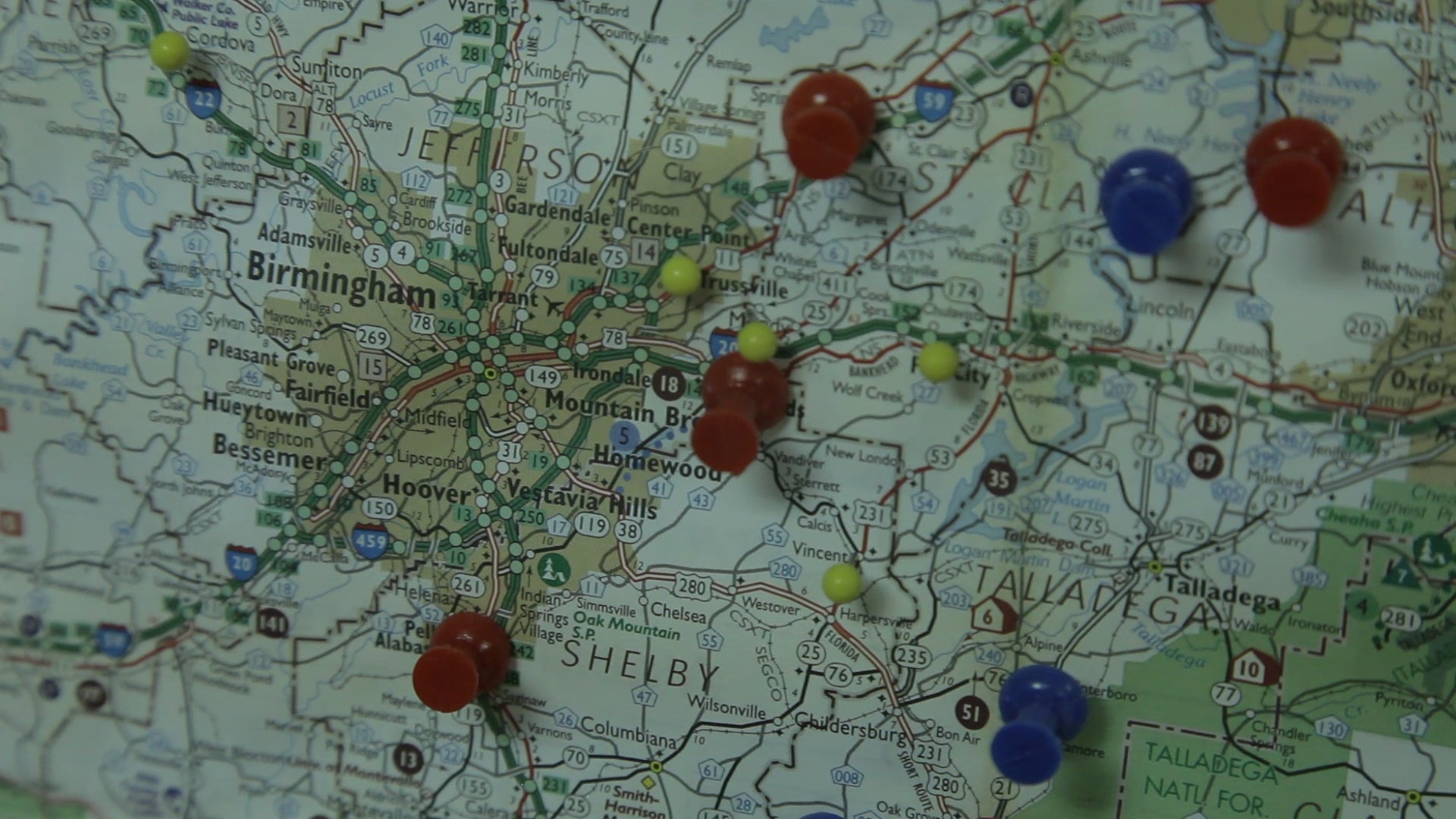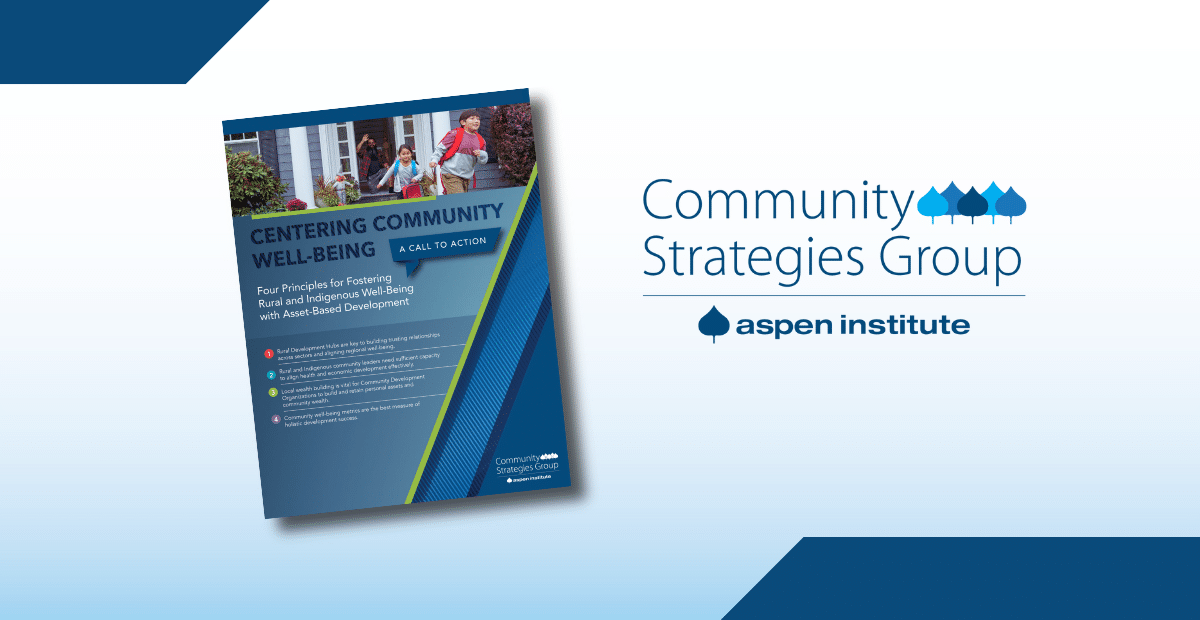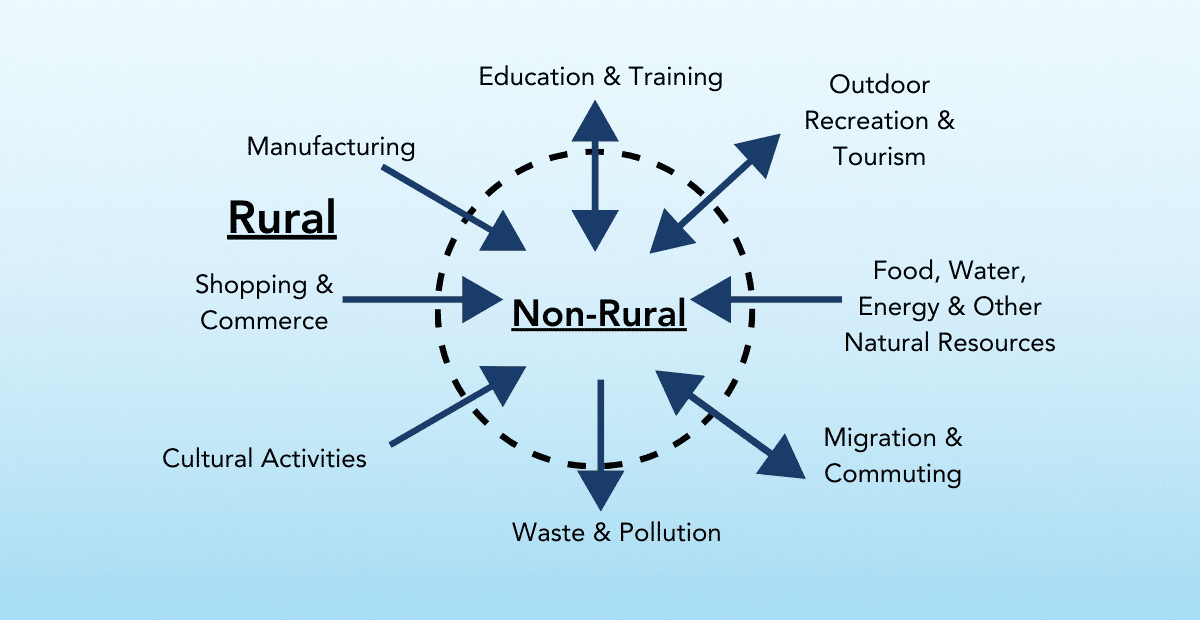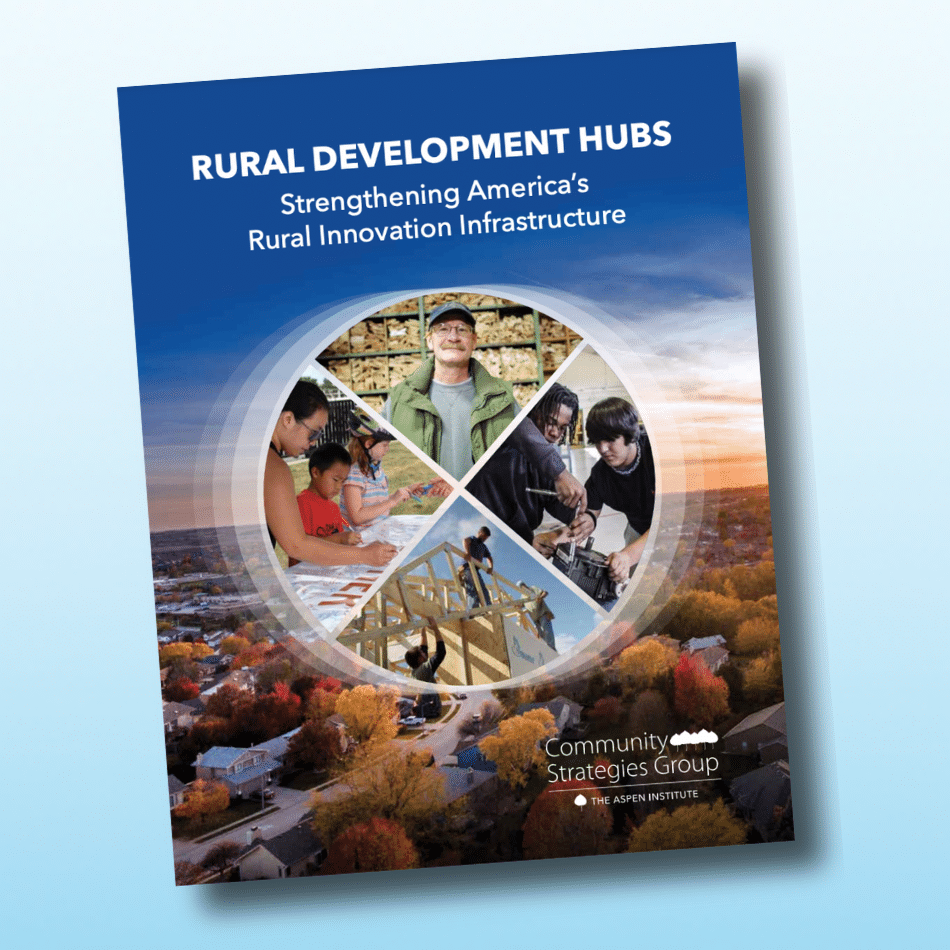Sector-specific solutions dominate rural policy. We often hear about rural health, rural water, rural housing, broadband, agriculture. These are pieces of something bigger: rural communities. What would it look like to consider the needs and priorities of rural communities in an integrated and holistic way? To start: building better fundamentals for rural progress with good data, fairer media practices, and stronger local organizations. Also foundational: a deep and sustained commitment to cross-sector collaboration among national and regional rural-focused organizations.
Since its modest beginnings with a $2 million War on Poverty grant in 1971, the Housing Assistance Council (HAC) has been able to successfully fund rural affordable housing, inform sound policy on rural housing programs, build capacity for local housing providers, and become the nation’s foremost source of information on rural housing. The Aspen Institute Community Strategies Group (Aspen CSG) is the outgrowth of a rural policy program and state policy program that, finding case studies and policy papers were insufficient to effect local change, shifted its attention to helping equip, convene and inspire local leaders through peer-to-peer engagement. Today, Aspen CSG supports leaders as they work to build more prosperous regions and advance those living on the economic margins—with approximately 75 percent of its work in rural America. With somewhat differing subject matter expertise and organizational strengths, HAC and Aspen CSG are not natural organizational partners, but we discovered we are each asking the same question: “What does it take for rural communities to thrive?” Above all, our shared concern about geographic inequality and our shared commitment to advancing equity and opportunity, especially in rural and tribal communities, brings us together.
And so, over the past two years, Aspen CSG and HAC, with support from the Ford Foundation, have organized three discreet projects to lay some groundwork for a more cohesive and connected rural development field. Each was designed to provide a foundational understanding of a fundamental challenge that obscures the nation’s understanding of and attention to rural issues and progress. The end result: three reports that set the stage for future work on improving rural data collection and use, bringing to light truer narratives about the realities and diversities of rural America, and investment in the tools and resources rural-serving organizations need to do right by the communities they serve—especially in the midst of COVID-19 response and recovery.
- In Search of “Good” Rural Data. Data that actually represent the needs of rural communities is imperative to provide evidence that will shape better policies and practices that advance prosperity and equity. This new report scans existing data sources that measure rural prosperity and unveils how these sources too often fail to provide sufficient or accurate data needed to design and improve economic development and investment in rural communities. The researchers interviewed rural practitioners, conducted a data scan of important go-to data sets, and uncovered key inadequacies in existing data sources that hamper analysis important to devising better economic development and investment in rural communities. The report explains these shortcomings, makes note of what is “good” in rural data, and outlines a number of strategies that can produce better data, such as new data collection methodologies, better data integration, and alternate sources.
- Revealing Rural Realities: What Fuels Inaccurate and Incomplete Coverage of Rural Issues? More than two-thirds of the nation’s 3,143 counties are rural. So are the vast majority of the thousands of incorporated places. Moreover, nearly all the 574 federally recognized tribes in the US have significant presence in rural regions of the country. And nearly 20 percent of our nation’s total population lives “rural” full-time, not counting growing numbers of part-time rural dwellers. Reporting on the lived experiences of the people who live in rural and tribal communities is thus a journalistic imperative; it should be done in a way that is true to the lived experiences of people in rural regions and in Indian Country. This second report explores how rural people and places show up in national media. It draws from interviews with local and national journalists, media editors, and people who live and work in rural America. along with a scan of both print and social media. The findings demonstrate a gulf: How rural people think and talk about their own communities differs widely from what national outlets typically report and cover. The report includes recommendations for increasing the quality and quantity of representative and nuanced stories about rural America in national and regional media.
- Ground Truth from Rural Practitioners: Findings from a survey of US rural practitioners. Local and regional rural-serving organizations shape and strengthen the fabric of their communities. But what kinds of organizations work in rural places? On what range of topics do they work? What expertise and resources do they have – and what do they need? Based on the findings from a survey of over 350 rural-serving organizations in 45 states, this research brief begins to provide policymakers, funders, and other well-meaning folks who want to do right by rural with information on the inner workings of rural-serving organizations. The goal: policy, investments, and partnerships that are better tuned to rural realities and the self-identified strengths, expertise, and needs of rural-serving organizations.
Economic recovery in rural areas will require surfacing pernicious structural and cultural issues, embedded over decades, and evident in the disparities COVID-19 has laid bare. That excavation process starts with better rural data. Better data and information is essential to rural-serving organization’s ability to assess what is working and what is not, to recognize the assets their communities have as well as the inequities in local outcomes; and to determine how to deploy their assets in ways that result in more resilient and fair communities where everyone belongs. While today’s available data indicates rural distress – and reporting about rural and tribal communities should acknowledge this – the media can be true to the complexity of reporting on rural and tribal communities by also showcasing assets, diversity, innovation, natural beauty, cultural richness, and opportunity.
We often talk about the need for collaboration in community; collaboration is needed among national rural-focused organizations too. Three additional national organizations partnered in our work – the Urban Institute with data expertise, and Hattaway Communications and the Center for Rural Strategies on communications. In addition, a host of on-the-ground rural practitioners made important contributions to all three projects. We are grateful that, as a result, the byproducts of this project include new and stronger relationships among these organizations and practitioners; though we have different areas of expertise, we have an overarching shared interest in advancing rural and urban America together. Improved lines of communication, better understanding of organizational strengths, and new ways to share intellectual property may not sound glamorous, but they are the building blocks of collaboration. And so, through this project and other new, joint endeavors, we will continue to walk the talk and do the sometimes-cumbersome but often-productive work of collaboration.
As we reflect on what we set out to accomplish with this initial collaboration, we have three hopes. First, we hope the three documents we’ve produced will be picked up and prove useful to those who seek to better understand rural realities. Second, we hope to spark curiosity and prompt important conversations about how we collect data and tell stories, and how what we know (or don’t) about the actors at work in rural regions influence the understanding—or misunderstanding—of rural people and places, let alone our perceptions of what’s possible. And finally, we hope that the commitment to collaboration that was at the heart of this effort will continue, mirrored and multiplied across the many organizations that are invested in fostering a more inclusive, more prosperous rural America.







